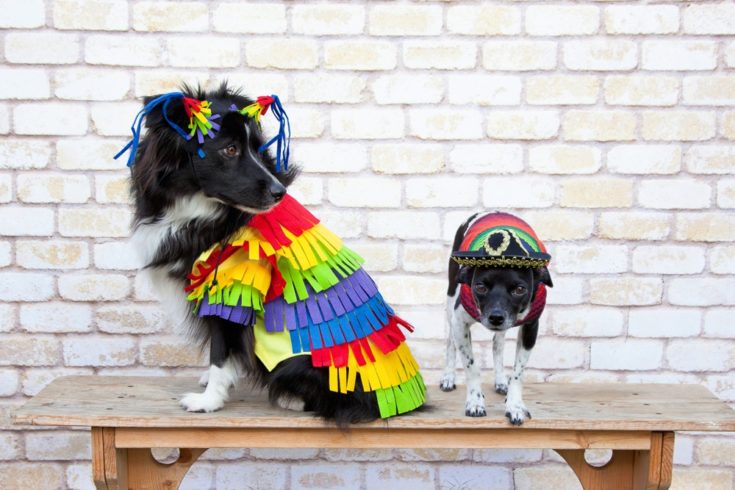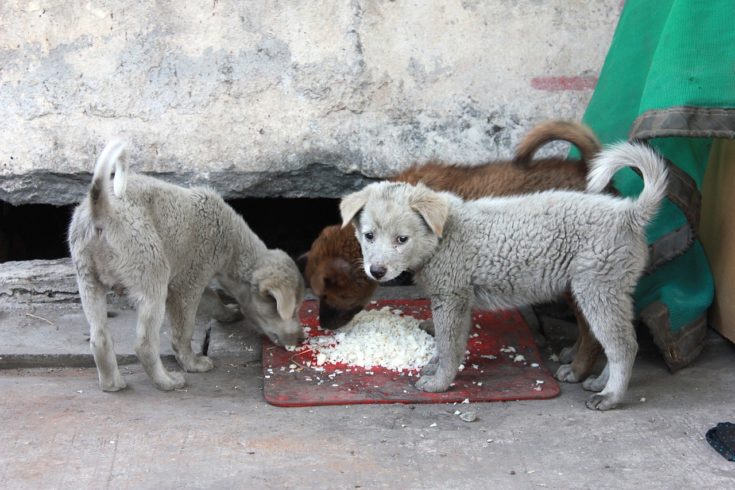Are Cane Corsos Good With Other Dogs? Do They Fight With Them?

Updated on
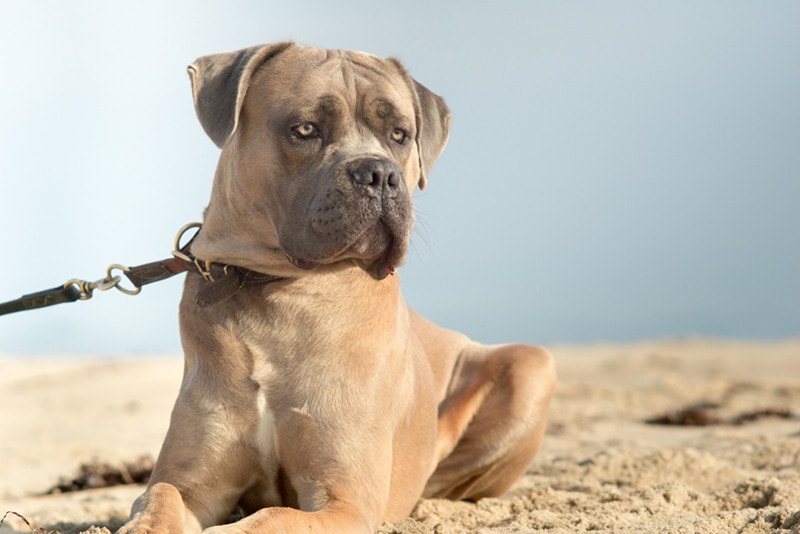
The Cane Corso is a large dog that can be fairly intimidating upon first look. However, they’re often a very devoted one that makes an ideal companion. But are they good with other dogs? This breed is naturally protective, so they can be aggressive toward other dogs.
That being stated, it’s essential to understand what to expect when introducing them to other canines. And with the right socialization, training, and care, these large dogs can learn to be friendly and accepting of other canines, allowing them to enjoy the company of their fellow four-legged friends.
Common Causes of Cane Corso Aggression
While aggression toward other dogs is a natural and instinctive behavior in Corsos, it should always be managed and controlled.
- Inadequate socialization
- Poor training
- Lack of exercise
- Lack of mental stimulation
- Poor communication with owner (or other dogs)
- Medical issues
- Environmental, emotional, or physical stress
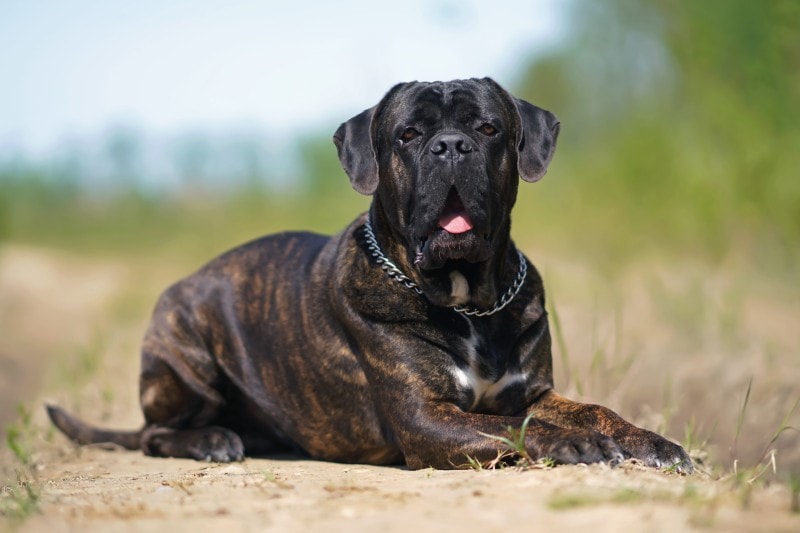
The Importance of Socialization
Socialization is a fundamental part of dog ownership and is essential for the health and well-being of your Corso. Dogs that are properly socialized as puppies are less likely to develop fear or aggression toward other dogs, people, and even new environments.
In fact, puppies that are appropriately socialized are more likely to be successful in a variety of dog sports, including dog agility, obedience, and even therapy work. So, it helps to begin socializing your puppy as soon as you bring them home. Young pups benefit from frequent and early socialization and exposure to a wide variety of people, places, sounds, and smells, believe it or not. The earlier you start, the more likely your Cane Corso pup will develop into a sociable and non-aggressive adult.
The 3 Tips for Introducing a Cane Corso to Other Dogs
Cane Corsos are territorial and protective dogs, making them ideal guardians and companions. And introducing your dog to other dogs can be a challenge, particularly if your dog hasn’t been trained before adulthood.
Having patience and understanding for your dog’s needs is essential for managing their aggression towards other dogs. Here are a few tips on how to set up good introductions.
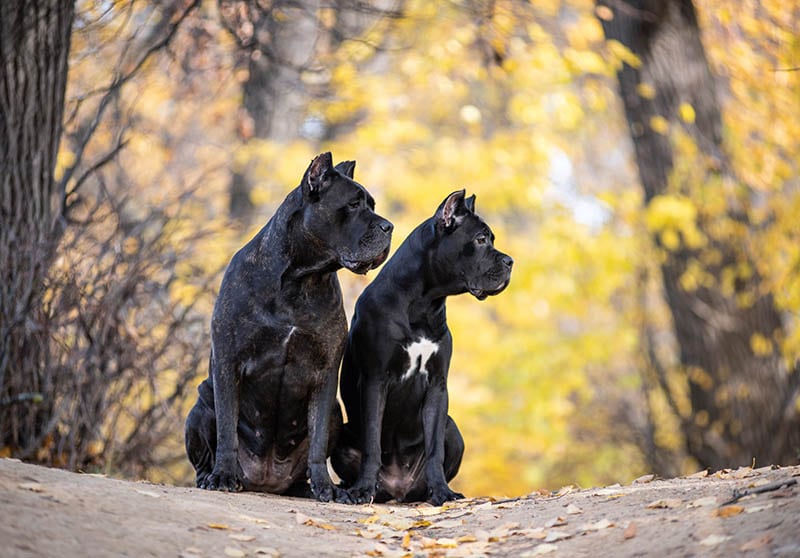
1. Create a Comfy Atmosphere
The first step for introducing a Cane Corso to other dogs is to ensure that both dogs are sociable and comfortable around other canines. When possible, it’s best to introduce a
Cane Corso to other dogs in a neutral environment, such as a dog park or open field. This helps to ensure that neither dog feels threatened or territorial in the presence of the other and allows them to get acquainted in a relaxed setting.
2. Supervise the Entire Time
Another important tip for introducing a Cane Corso to other dogs is to keep the interaction supervised. Though it’s important to give both dogs the freedom to explore and get to know one another, it’s also important to have a human present to monitor their interactions and intervene, if needed.
This way, owners can ensure that their Cane Corso is behaving appropriately and not becoming overly aggressive with their introductions. Additionally, you’ll want to ensure that both dogs are properly leashed (or muzzled if necessary).
A muzzle may be necessary for an adult Cane Corso that hasn’t been socialized before, as their size and strength can make them dangerous if they become agitated.
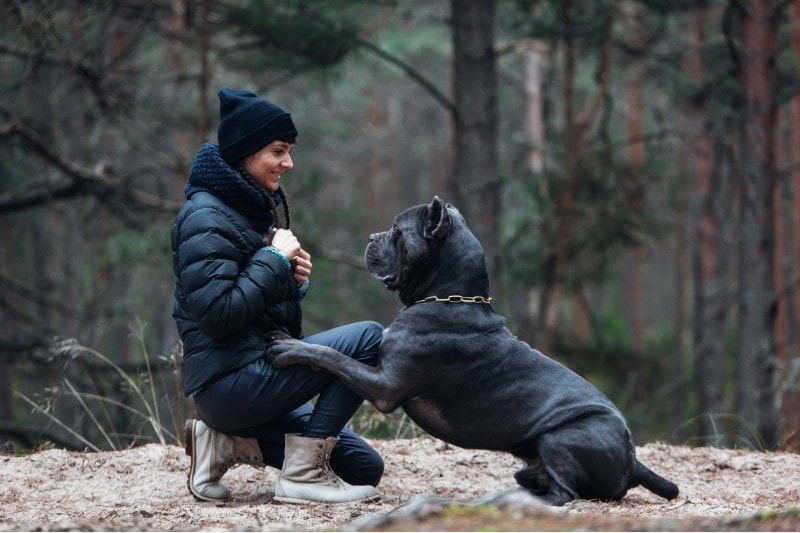
3. Have Patience
Finally, it’s important to remember to be patient and not rush the introduction process. The interaction between dogs should be allowed to progress naturally and at a comfortable pace for both animals.
And note that it may take multiple sessions for the two dogs to become comfortable with one another. Owners should be prepared to provide plenty of tasty treats and positive reinforcement during this time.
How to Socialize Your Cane Corso to Other People, Places & Animals
Even socializing a Cane Corso with other people can be a challenging task, but with the right tips and tricks, it doesn’t have to be. Here are some ways to help you learn how to introduce your Corso to new people, places, and animals, as well as how to use positive reinforcement and reward-based training to ensure their socialization is a success.
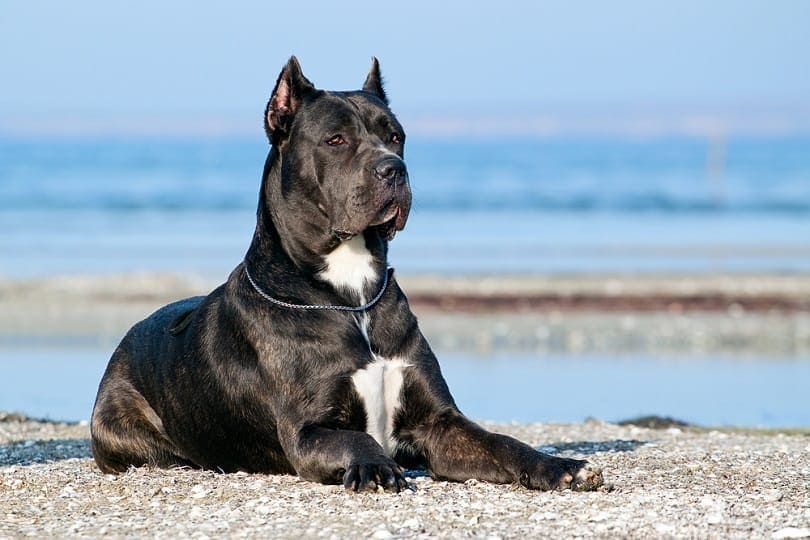
Start Early with Meeting New People
You can socialize your puppy as early as 6-8 weeks. Many veterinarians strongly recommend waiting until your puppy has at least one round of vaccines and a round of deworming before introducing your dog to other dogs or people. But those first 12-15 weeks of your puppy’s life are a great time to begin socializing them.
When socializing a Corso puppy, the goal is to expose them to new people, places, and animals in a positive manner so that they learn to be comfortable around them. And the best way to introduce your Cane Corso to new people is to use positive reinforcement and reward-based training.
It’s best if you invite friends and family over to your house to help you introduce your pup to new people. The more people you can introduce them to, the better. Talk to your pup throughout the introduction and reassure them that everything is okay.
You can also use treats to help your pup associate new people with positive things. And if your pup is demonstrating signs of anxiety or fear, or if they’re barking or trying to bite someone, you need to stop the introduction and try again another time when your pup is more comfortable and relaxed.
Introducing Cane Corsos to New Places
The best way to introduce your Corso to new places is to actually take them to those places and expose them to those environments. The earlier you can do this, the better.
You can start taking your pup to public places when they’re between 8 and 12 weeks old. The first places you want to take them to are places that are very familiar to you, like those in your neighborhood.
Initially, try to keep the trips short and sweet, and remember to reward your pup with treats and positive reinforcement when they’re in new places. And of course, be sure to keep your pup on a leash and take note of any signs of anxiety such as whimpering, barking, or excessive scratching or licking.
Young pups can be overwhelmed with unfamiliar public environments the first time out, so keep a close eye on him or her while you’re out.
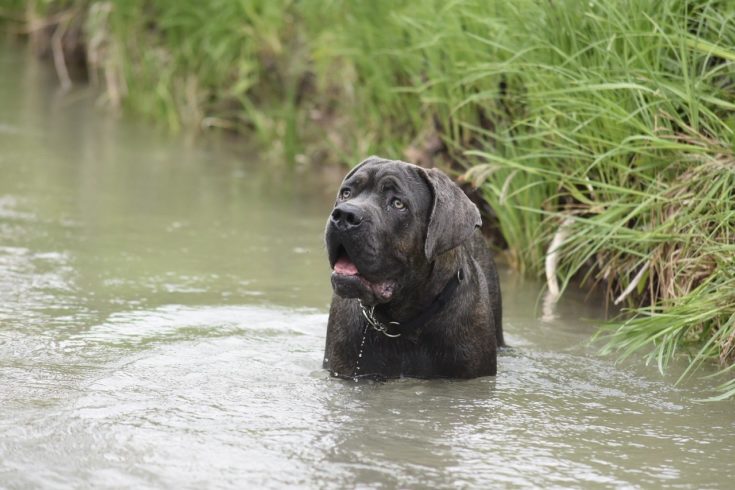
Introducing Your Cane Corso to Your Cat
The best way to introduce your Cane Corso to your cat is with positive reinforcement and reward-based training. If you have a cat at home and bring in a new adult or puppy Cane Corso, the introduction should be done as soon as possible. But you’ll also want to make sure that you do it at the right time. It’s best if both the animals are well fed and in a relaxed state.
Also, make sure to have your Corso on a leash to prevent it from becoming too aggressive with a cat that may be easily intimidated by its size or presence. During the introduction, expect your Corso to get close to your cat and sniff it a bit – and your cat may do the same.
However, if your pup is barking or trying to bite the other animal, it’s best to stop the introduction and try again another time when your pup is more comfortable and relaxed.
The introduction should only be for a few minutes and note that you may need to reintroduce the animals again to help them get familiar with one another. Again, patience is needed during this time, as it may take your cat a while to warm up to your dog especially if it’s not used to being around dogs.
You should also monitor the behavior and interaction with the pets over the next few weeks and months to ensure that they get along and play safely with one another.
Establishing a Routine
Try to establish a routine early on with your Corso to help them become more comfortable and confident in new situations. The best way to do this is to do the same thing with your dog each and every day.
This could mean walking your pup at the same time every day, eating at the same time every day, sleeping at the same time every day, or even reintroducing them to your cat for a few minutes each day.
By following a routine, you’re showing your pup that they can depend on you and that they always know what to expect. This will help them become more relaxed when presented with new situations and reduce the chances that they’ll lash out aggressively.
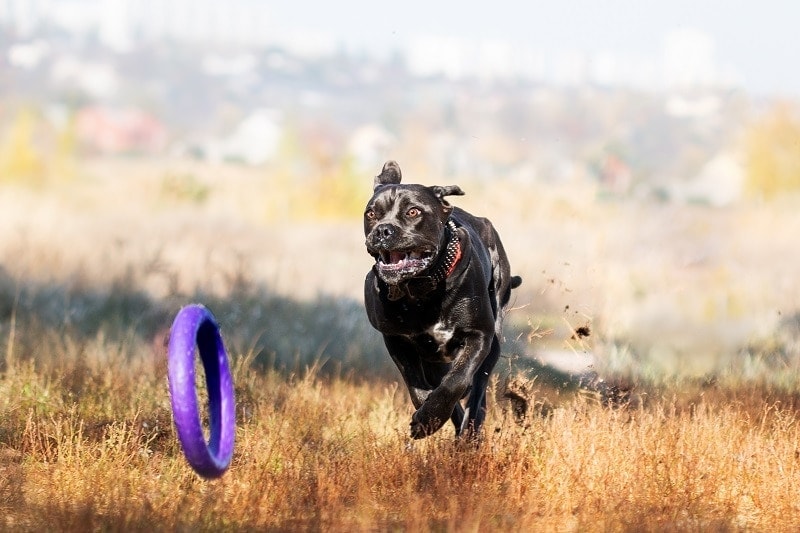
Prevention and Management of Aggressive Behavior
Aggressive behavior in dogs can be difficult to manage and often requires a strict and consistent training regimen. You should seek the assistance of a professional dog trainer or behaviorist if you feel that your dog’s aggression is out of control.
You should always take precautions when interacting with other dogs, particularly dogs that you don’t know. Keep your dog on a short leash in social situations and remain mindful of your dog’s behavior at all times. If possible, try to avoid bringing your dog to dog parks, where they will likely come into contact with a variety of strange and unfamiliar dogs.
Wrapping Things Up
Cane Corsos are amazing dogs that can get along with other dogs, but it’s important to socialize and train them, as their intimidating, large size can make them a bit dangerous. Just like with any other canine, Cane Corsos can be socialized and trained to be less aggressive. It’s best to train your puppy when it is young and to introduce it to new people, environments, and other animals so that it can become a well-behaved adult when it gets bigger.
Featured Image Credit: Skox, Shutterstock


